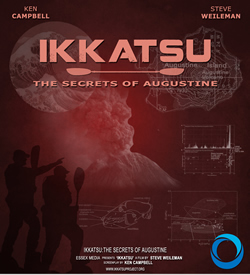Cleaning up after the animals
Now it’s everywhere.
There is a beach at the tip of Cape Flattery that is accessible by water only. I think of it much the same way that a pilgrim might view the kaabaa, or an art lover might look at the Louvre, or like a diehard Packer fan might view Lambeau Field. When I was there a month or so ago, sitting on a giant drift log, admiring the billion-dollar view, my eyes were drawn to one of the caves off to the side of the beach where someone with more spray paint than brains had obviously been before.  The letter “T,” about 24 inches wide and 30 inches high, had been rendered in blue paint about six feet up on the cave wall.
The letter “T,” about 24 inches wide and 30 inches high, had been rendered in blue paint about six feet up on the cave wall.
Now, no offense to Edward Seymour, but I am not a spray paint afficionado. My main beef with the product is that it seems to give people with nothing to say too much freedom to say it. I suppose it shouldn’t amaze me, but it does, the depths of some people’s foolishness.
I had no way to remove the blue streaks from the rocky wall when I first saw them, but as I made the drive back home, I made a little promise to myself that I’d be back as soon as I could, with tools to reset the scene, back to its original condition. Last Monday was my chance and I took it.
I left town early, early enough that I was able to get on the water in Neah Bay at about 9:30 am. I traveled west along the strait, against a 10-knot wind, but with a good push from the outgoing tide. It only took an hour or so to get to the Cape, where I threaded my way into shore through a boulder field that almost blocked the beach. After a quick lunch, I got to work.
I brought two drills with me, along with extra batteries and circular wire brush heads. I had some other implements of destruction along but these would prove to be the most effective. The work went quickly at first, but after most of the easy spots had been scoured clean, the paint that remained seemed even more obvious. Eventually, I wetted down the area and threw sand onto it, then went at it with the brushes again. That method worked better at getting into the smaller chinks and crevices where the little globs of blue still hid.
brush heads. I had some other implements of destruction along but these would prove to be the most effective. The work went quickly at first, but after most of the easy spots had been scoured clean, the paint that remained seemed even more obvious. Eventually, I wetted down the area and threw sand onto it, then went at it with the brushes again. That method worked better at getting into the smaller chinks and crevices where the little globs of blue still hid.
After 90 minutes I was done. The wall showed scars where I had gone deeper in some spots than others, but I don’t
 think anyone arriving at the beach, who was unaware of the graffito that had once been there, would be able to see a difference between the areas I had worked on and the remainder of the wall.
think anyone arriving at the beach, who was unaware of the graffito that had once been there, would be able to see a difference between the areas I had worked on and the remainder of the wall.
I took a short walk around the tiny cove, checking along the high tide line for any treasures that may have washed up since my last visit (there weren’t any), and came back one last time to see if I had done an adequate job. I think I did. And now, a few days later, I’m even more glad that I did it.
I hope I don’t ever need to do it again.











